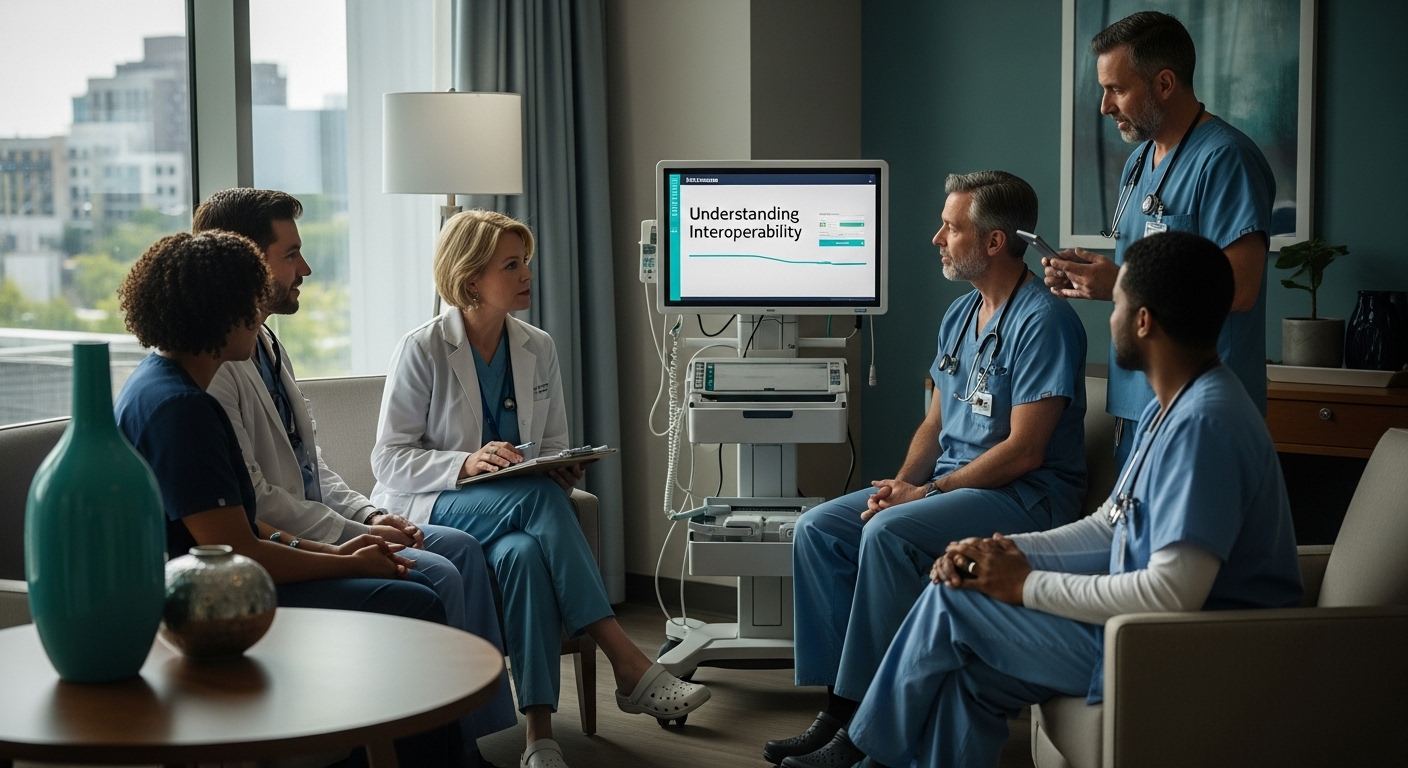Understanding Predictive Analytics in Healthcare
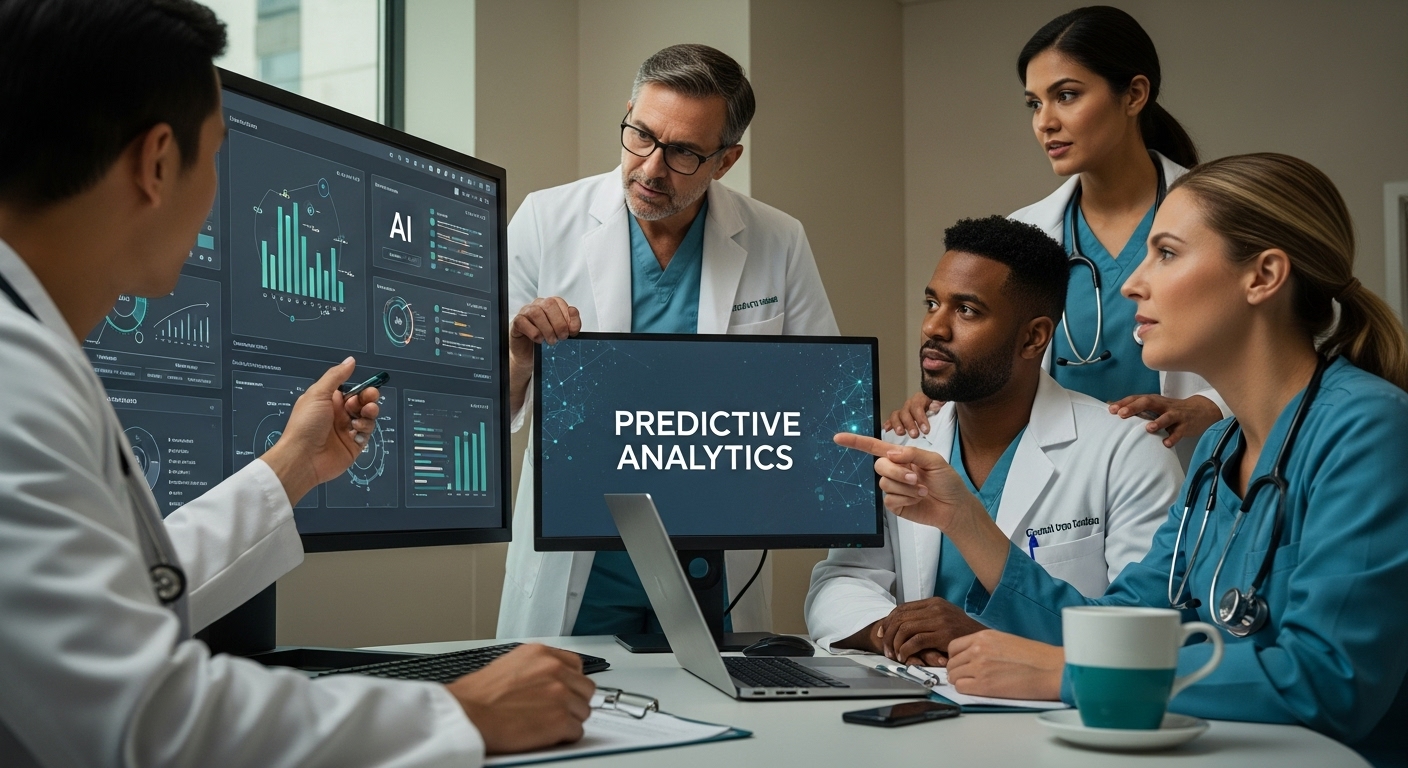
Predictive analytics is shaking up healthcare in ways no one expected. Hospitals can now use patient data to see health risks weeks before symptoms even show up. Some hospitals have cut readmission rates by up to 15 percent using these tools. That sounds high tech, but the real surprise is this technology is moving out of big research centers and into everyday clinics across the country. Suddenly the future of medicine is not in some far off lab. It is showing up in waiting rooms right now.
Table of Contents
- What Is Predictive Analytics In Healthcare?
- Why Predictive Analytics Matters For Healthcare Providers
- How Predictive Analytics Works In Healthcare Systems
- Key Concepts Behind Predictive Analytics In Healthcare
- Real-World Applications Of Predictive Analytics In Healthcare
Quick Summary
| Takeaway | Explanation |
|---|---|
| Predictive analytics transforms healthcare decision-making. | These analytic methods provide actionable insights that enhance patient care and operational efficiency within medical organizations. |
| Data integration improves predictive accuracy. | By aggregating diverse data sources, healthcare systems can identify complex patterns to enhance forecasting capabilities. |
| Advanced algorithms drive personalized patient care. | Machine learning and statistical modeling enable tailored interventions and early risk identification for patients. |
| Predictive models optimize resource allocation. | Healthcare organizations can efficiently manage staffing and equipment needs by predicting patient demand and operational requirements. |
| Ethical considerations are crucial for model validation. | Ensuring patient data privacy and transparency in processes is essential for deploying reliable predictive analytics in healthcare. |
What is Predictive Analytics in Healthcare?
Predictive analytics in healthcare represents a sophisticated technological approach that transforms raw medical data into actionable insights, enabling proactive and precision-driven healthcare strategies. By leveraging advanced algorithms and machine learning techniques, healthcare organizations can anticipate potential health risks, optimize patient care, and make data informed decisions.
Core Principles of Predictive Analytics
At its fundamental level, predictive analytics involves collecting and analyzing historical and current healthcare data to forecast future medical trends and patient outcomes. Research from the National Institutes of Health demonstrates how these sophisticated computational methods can identify complex patterns that human analysis might overlook.
The process typically involves several critical components:
- Data Collection: Gathering comprehensive patient information from electronic health records, medical imaging, diagnostic tests, and genetic profiles
- Statistical Modeling: Applying advanced mathematical algorithms to identify potential health risks and predict probable medical scenarios
- Machine Learning Integration: Using adaptive algorithms that continuously improve prediction accuracy as more data becomes available
Practical Applications in Healthcare Delivery
Healthcare predictive analytics extends far beyond theoretical modeling. It provides tangible benefits across multiple medical domains. Hospitals can predict patient admission rates, identify individuals at high risk for specific conditions, and develop personalized prevention strategies.
For instance, predictive models can help healthcare providers:
- Anticipate potential disease progression in chronic conditions
- Identify patients likely to experience hospital readmissions
- Optimize resource allocation in medical facilities
- Develop targeted intervention strategies for high risk patient groups
By transforming complex medical data into strategic insights, read more about emerging healthcare technology trends, predictive analytics represents a powerful tool in modernizing healthcare delivery and improving patient outcomes.
Why Predictive Analytics Matters for Healthcare Providers
In an increasingly complex healthcare landscape, predictive analytics emerges as a critical strategic tool that transforms how medical organizations approach patient care, resource management, and operational efficiency. By converting vast amounts of medical data into meaningful insights, healthcare providers can make more informed decisions that directly impact patient outcomes and organizational performance.
Economic and Operational Benefits
Research from the National Institutes of Health demonstrates that predictive analytics can significantly reduce healthcare costs and improve operational workflows. The economic implications are profound, offering healthcare providers a mechanism to optimize resource allocation and minimize unnecessary expenditures.
The key economic advantages include:
- Reducing unnecessary medical procedures and tests
- Minimizing hospital readmission rates
- Optimizing staff scheduling and resource deployment
- Identifying high risk patients for early intervention
Patient Care and Risk Management
Predictive analytics transforms patient care from a reactive to a proactive model. By analyzing historical patient data, medical conditions, genetic information, and lifestyle factors, healthcare providers can anticipate potential health risks before they become critical medical events.
This approach enables more personalized and targeted healthcare interventions, such as:
- Early detection of chronic disease progression
- Tailored preventative care strategies
- Precision medicine approaches
- Enhanced patient engagement and health management
Strategic Decision Making
Beyond immediate patient care, predictive analytics provides healthcare organizations with strategic insights that drive long term planning. Explore how technology is reshaping healthcare dispatching, demonstrating the transformative potential of data driven decision making.
Healthcare leaders can leverage predictive models to understand emerging trends, allocate resources more effectively, and develop comprehensive strategies that anticipate future healthcare challenges. By embracing these advanced analytical tools, providers can create more responsive, efficient, and patient centered healthcare systems.
How Predictive Analytics Works in Healthcare Systems
Predictive analytics in healthcare represents a complex technological ecosystem that transforms raw medical data into intelligent, actionable insights through sophisticated computational methodologies. By integrating multiple data sources and applying advanced algorithmic techniques, healthcare systems can generate precise predictions about patient health, operational requirements, and potential medical outcomes.
Data Integration and Collection
Research from biomedical informatics reveals that effective predictive analytics relies on comprehensive data aggregation from diverse sources. Healthcare systems collect information from multiple touchpoints, including:
- Electronic health records
- Patient demographic data
- Medical imaging results
- Genetic and molecular profiles
- Historical treatment outcomes
- Insurance and claims information
- Wearable device monitoring data
Advanced Algorithmic Processing
Once data is collected, sophisticated machine learning algorithms and statistical models analyze complex interconnections. These computational techniques identify subtle patterns and correlations that human analysts might overlook. Key processing techniques include:
- Regression Analysis: Predicting continuous numeric outcomes
- Classification Models: Categorizing patients into specific risk groups
- Clustering Algorithms: Identifying similar patient profiles
- Neural Network Analysis: Detecting intricate, non linear relationships in medical data
Predictive Modeling and Implementation
The final stage transforms computational insights into practical healthcare strategies. Explore innovative healthcare technology applications, which demonstrate how predictive models translate complex data into actionable medical interventions.
Healthcare organizations use these predictive models to:
- Develop personalized treatment protocols
- Anticipate potential health risks
- Optimize resource allocation
- Design targeted preventative care programs
By continuously refining algorithms through machine learning techniques, predictive analytics creates a dynamic, responsive healthcare ecosystem that adapts to emerging medical challenges and individual patient needs.
Below is a table summarizing the core components and features that make up the predictive analytics process in healthcare systems.
| Component | Description |
|---|---|
| Data Collection | Gathering comprehensive patient and medical data from electronic health records, imaging, and wearables |
| Data Integration | Combining multiple data sources—demographics, genetics, insurance, outcomes—for a unified view |
| Statistical Modeling | Applying complex mathematical algorithms to uncover health risks and inform decision-making |
| Machine Learning | Utilizing adaptive algorithms that get more accurate as additional data is collected |
| Predictive Modeling | Generating actionable forecasts for patient outcomes, resource needs, and operational planning |
| Continuous Improvement | Refining algorithm accuracy and usefulness through ongoing data input and model adjustments |
| Implementation | Applying predictive insights to real-world protocols, treatment plans, and resource allocation |
Key Concepts Behind Predictive Analytics in Healthcare
Predictive analytics in healthcare represents a sophisticated confluence of advanced technological methodologies designed to transform complex medical data into meaningful, actionable insights. Understanding the fundamental concepts driving these analytical approaches is crucial for healthcare professionals seeking to leverage data driven decision making.
Foundational Data Science Principles
Research from the Agency for Healthcare Research and Quality highlights the critical interdependence of multiple data science principles that underpin predictive analytics. These foundational elements include:
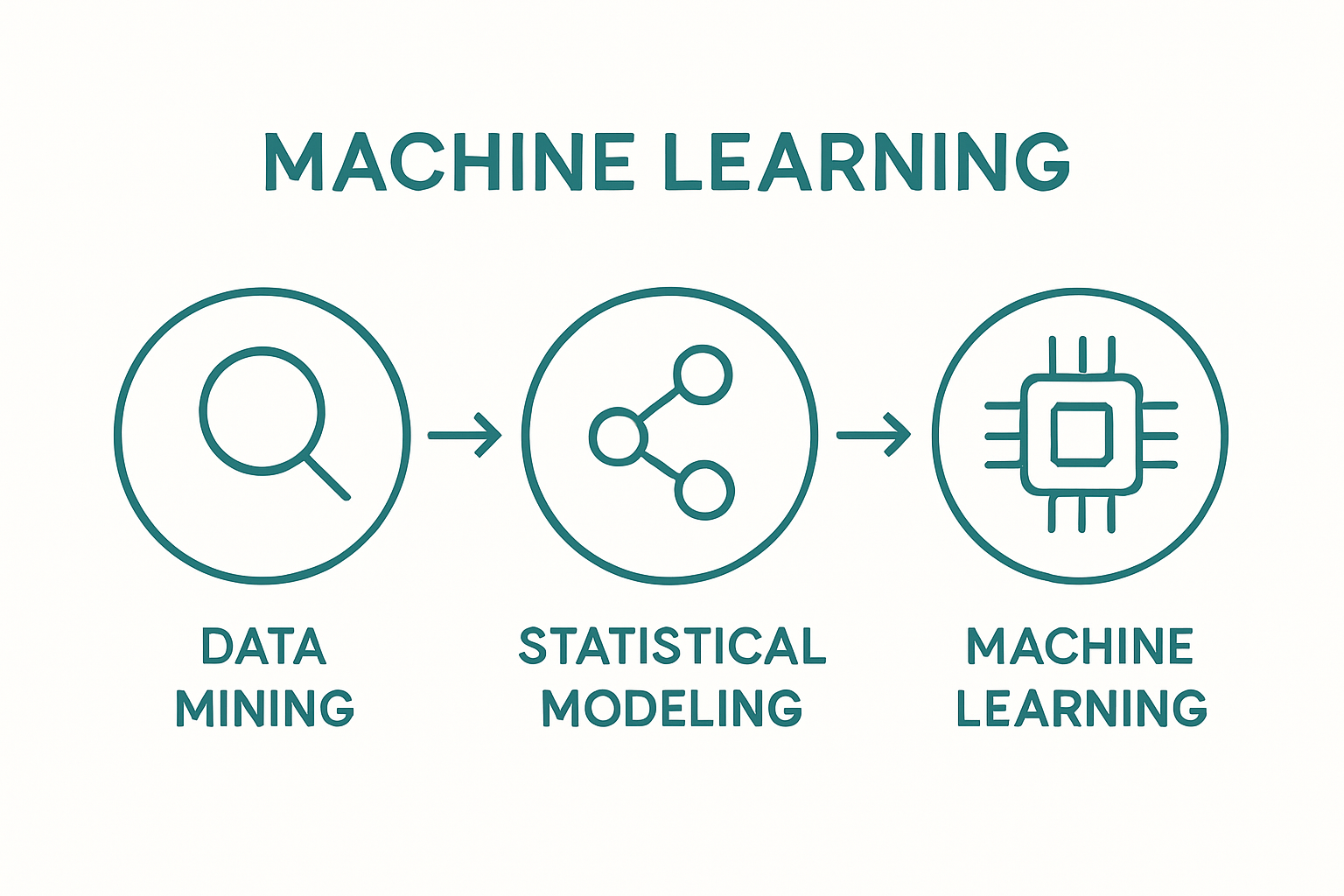
- Data Mining: Extracting patterns from large medical datasets
- Statistical Modeling: Developing mathematical representations of healthcare trends
- Machine Learning: Creating adaptive algorithms that improve predictive accuracy
- Complex Network Analysis: Understanding interconnected healthcare relationships
Algorithmic Complexity and Model Development
Predictive analytics relies on sophisticated algorithmic approaches that go beyond traditional statistical methods. Healthcare organizations employ multiple computational strategies to generate precise predictions, including:
- Supervised learning techniques for structured medical data
- Unsupervised learning for discovering hidden patterns
- Deep learning neural networks for complex medical image analysis
- Probabilistic graphical models for understanding clinical relationships
Ethical Considerations and Model Validation
Beyond technical capabilities, predictive analytics demands rigorous ethical frameworks and validation protocols. Explore emerging healthcare technology insights, which demonstrate the importance of responsible technological implementation.
Key validation principles include:
- Ensuring patient data privacy and confidentiality
- Maintaining transparent algorithmic decision making processes
- Continuously monitoring model performance and accuracy
- Mitigating potential biases in predictive modeling
By understanding these intricate conceptual foundations, healthcare organizations can develop more robust, reliable, and ethically sound predictive analytics systems that genuinely enhance patient care and operational efficiency.
Real-World Applications of Predictive Analytics in Healthcare
Predictive analytics transforms theoretical medical data into practical, actionable strategies that directly impact patient care, operational efficiency, and healthcare system performance. By leveraging sophisticated computational techniques, healthcare organizations can address complex challenges across multiple domains, creating more proactive and personalized medical interventions.
Clinical Diagnostics and Patient Management
Research from clinical informatics demonstrates the powerful potential of predictive analytics in early disease detection and patient management. Healthcare systems now utilize these advanced technologies to:
- Forecast potential disease progression
- Identify patients at high risk of complications
- Predict potential hospital readmissions
- Enable early intervention strategies
- Develop personalized treatment protocols
Operational and Resource Optimization
Beyond clinical applications, predictive analytics offers healthcare organizations unprecedented insights into operational efficiency. Hospitals and healthcare systems can strategically allocate resources, manage staffing requirements, and optimize patient flow through data driven methodologies:
- Predicting patient admission rates
- Forecasting equipment and supply needs
- Managing emergency department capacity
- Scheduling medical staff more effectively
- Reducing waiting times and improving patient experience
Precision Medicine and Treatment Planning
Learn more about innovative patient monitoring strategies, which highlight the transformative potential of predictive technologies in healthcare delivery.
Predictive analytics enables a more nuanced approach to treatment planning by:
- Analyzing genetic and molecular profiles
- Identifying most effective treatment protocols
- Anticipating potential medication interactions
- Customizing therapeutic approaches
- Monitoring patient response in real time
By integrating advanced computational techniques with medical expertise, predictive analytics creates a more intelligent, responsive, and patient centered healthcare ecosystem that continuously adapts to individual and population health needs.
This table compares the main practical applications of predictive analytics in healthcare, highlighting their purposes and benefits for organizations and patients.
| Application Area | Purpose | Key Benefits |
|---|---|---|
| Clinical Diagnostics | Forecast disease progression, identify high-risk patients | Enables early intervention, personalized care, reduced complications |
| Operational Optimization | Predict admissions, equipment needs, and staffing | Improves resource allocation, reduces wait times, enhances efficiency |
| Patient Management | Predict hospital readmissions, create interventions | Reduces readmissions, increases preventative care effectiveness |
| Precision Medicine | Analyze genetic and molecular profiles | Customizes treatments, anticipates medication interactions |
| Patient Engagement | Tailor care strategies based on risk and trends | Boosts involvement, improves health outcomes |
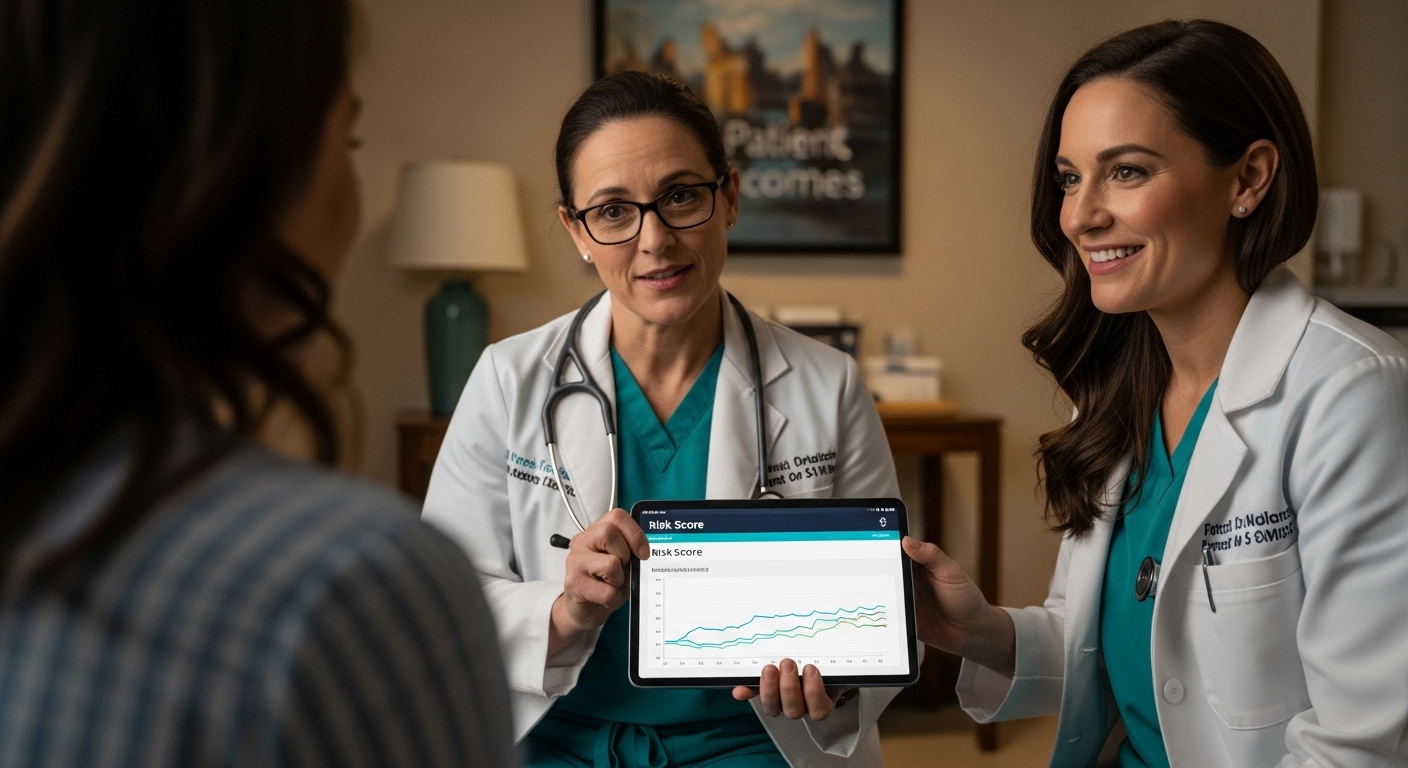
Turn Predictive Healthcare Insights Into Immediate Operational Gains
Harnessing the power of predictive analytics in healthcare is vital, but the reality is clear. Many organizations still face challenges such as resource misallocation, rising costs, and difficulty coordinating care across providers. The article highlights how advanced data, machine learning, and real-time modeling can help anticipate needs and improve outcomes, but true results depend on seamless execution.
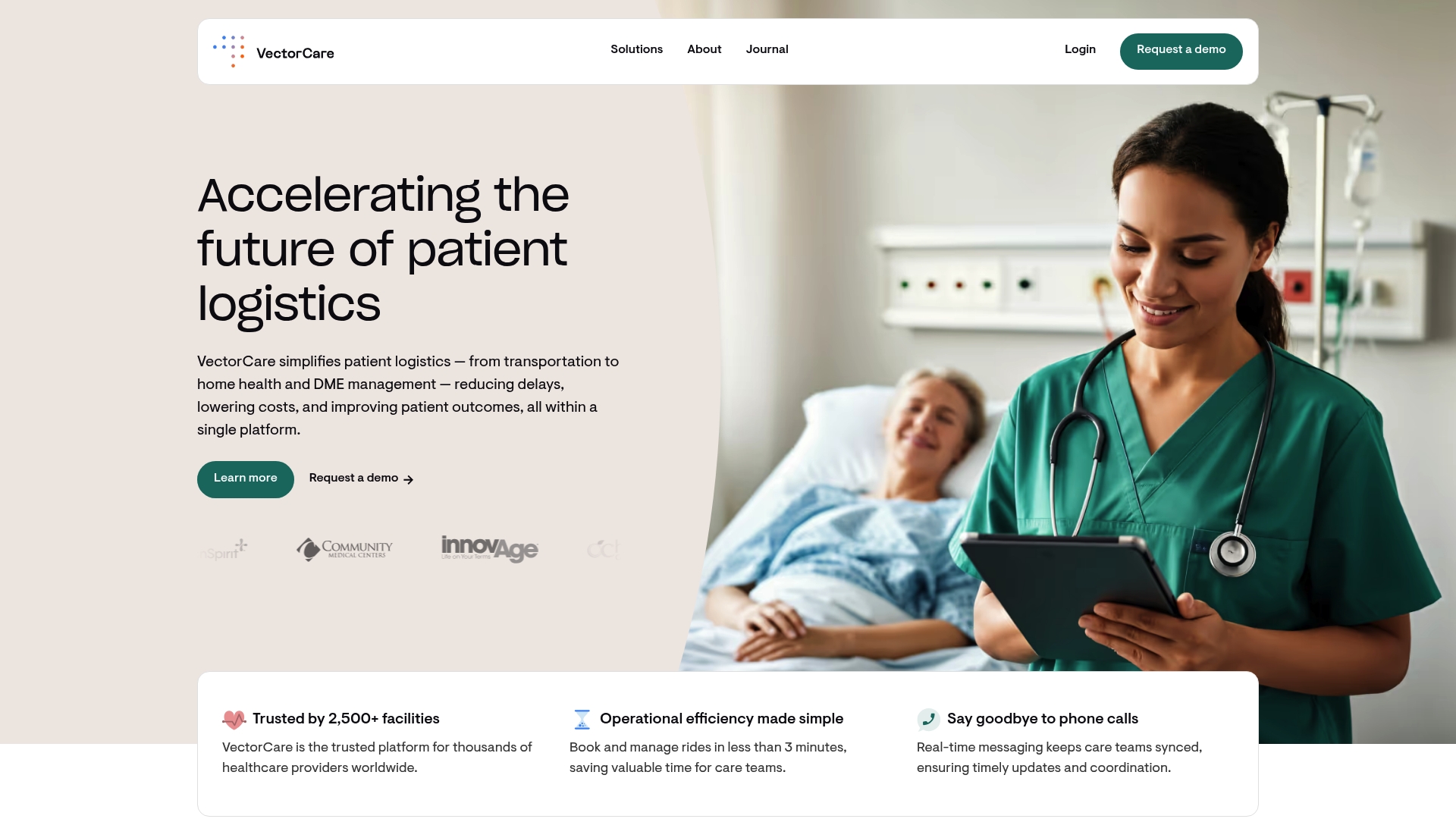
VectorCare’s digital platform bridges the gap between analytics and action. Our solution lets you quickly apply the insights from predictive models with user-friendly workflow tools, automated dispatch, and real-time data sharing. Providers, payers, and care coordinators gain a simple way to synchronize patient logistics, optimize schedules, and ensure timely service delivery. Ready to reduce delays and take informed action based on predictive data? Explore how VectorCare’s integrated platform turns complex insights into efficient patient care today. Visit our homepage and see how you can transform predictions into improved outcomes right now.
Frequently Asked Questions
What is predictive analytics in healthcare?
Predictive analytics in healthcare refers to the use of advanced algorithms and machine learning techniques to analyze medical data, allowing healthcare providers to anticipate health risks, optimize patient care, and make informed decisions.
How does predictive analytics work in healthcare systems?
Predictive analytics works by integrating various data sources, such as electronic health records and genetic profiles, and applying advanced statistical models and machine learning algorithms to identify patterns and forecast future patient outcomes.
What are the benefits of using predictive analytics in healthcare?
The benefits include improved patient care through early risk identification, reduced healthcare costs by minimizing unnecessary procedures, enhanced operational efficiency, and the development of personalized treatment plans tailored to individual patient needs.
What are some practical applications of predictive analytics in healthcare delivery?
Practical applications include forecasting disease progression, identifying high-risk patients, predicting hospital readmissions, optimizing resource allocation, and enhancing patient engagement with tailored healthcare strategies.
Recommended
- 2020 Healthcare Recap & Upcoming Care Trends – VectorCare
- Top Takeaways: Deloitte’s Healthcare Outlook Review – VectorCare
- Can the AHEAD Model Transform Healthcare At Home? – VectorCare
- The Patient’s Journey Podcast: Tom Foley – VectorCare
- SEO for Healthcare Providers: Proven Strategies to Grow Your Practice
- 2025 Guide to Insurance Analytics: Transform Your Decisions - Digital Insurance Platform | IBSuite Insurance Software | Modern Insurance System



